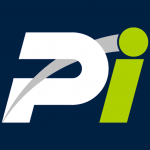Join to see the complete book
There are several concepts that are helpful to understand in order to get the most out of Predictive Innovation. This section covers these concepts.
Functional Distinctions
You've probably seen products with long lists of features that don't have much value for the primary function of the product. Some products have differences in the primary function but the differences are so small it doesn't matter. Even large differences that don't relate to the purpose of the product do not mean much to users. The important differences are those that noticeably affect the function. These are Functional Distinctions.
The purpose and the result determine Functional Distinctions. The intended goal of using the product determines which functions it must perform.
For a product that is used by blind people, the color does not matter. However, if the product is used by blind people to show sighted people they are blind, such as a white cane with a red tip, color is very important.

Sometimes the amount causes a Functional Distinction. More or less of the same thing often doesn't have a significant effect but there can be differences of amount that cause a functional difference.
Water is a requirement of life but if you have too much you can die. Same thing with heat. Too little heat and you freeze to death, too hot and you burn. There are many Functional Distinctions of scale in science. Water below 0°C freezes and is a solid. Between 0°C and 100° C water is a liquid. Over 100°C water is a gas. Solids, liquids, and gasses each have very different properties and function differently.
| Chapter 4 | Chapter 6 |
